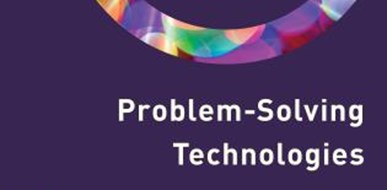Sadjad Soltanzadeh publishes monograph on Philosophy of Technology
Published 7 February 2022
DILEMA researcher Dr Sadjad Soltanzadeh recently published a monograph entitled Problem-Solving Technologies: A User-Friendly Philosophy. The book is available here with Rowman & Littlefield Publishers.
Sadjad Soltanzadeh, Problem-Solving Technologies: A User-Friendly Philosophy (2022) Rowman & Littlefield Publishers
About the book
In our everyday activities we use material objects in different shapes and forms to solve various practical problems. We may use a knife to tighten a screw, turn an old washing machine drum into a fireplace, use the edge of a kitchen countertop to open a bottle, or place a hammer on the puncture patch glued to a bike’s inner tube to exert pressure on the patch until the glue dries. How should we identify these objects? What functions do they have?
If we want to understand the role which material objects play in our everyday activities, we need to move away from universal identifications of objects. This is because universal identifications are not sensitive to contextual differences and cannot describe how each individual user connects to their surrounding objects in an infinite variety of contexts. Problem-Solving Technologies provides a user-friendly understanding of technological objects. This book develops a framework to characterise and categorize technological objects at the level of users’ subjective experiences.
The book shows that the gap between theory and practice in philosophy, and in particular in the philosophy of technology, is partly caused by theoretical concepts and categorisations which are not fit for addressing practical decision-making and normative issues. Such practically irrelevant categorisations include: the artefact/non-artefact distinction, the distinction between proper and accidental functions and discussions on the existential status of artefacts and artefact kinds. The book argues that their practical irrelevance is rooted in the metaphysical approach which underlies the majority of current theories. This approach constructs metaphysics by studying entities and properties that they universally possess. Its categorisations are static, binary and unfit for studying the dynamic world.
The book proposes a new approach which constructs metaphysics by studying activities of reflective beings, such as humans. In this approach, the study of objects is accompanied by the study of activities. This leads to a non-binary notion of reality and allows for a dynamic and personal categorisation of objects.
The book identifies three main branches of metaphysics of technology and uses its novel approach to reconstruct these branches. The first branch is the general categorisation (used for distinguishing between technological, artistic, religious, entertainment, and other types of objects). The second branch is the particular categorisation (used for functional classification of objects; e.g. mallets, anti-shoplifting gates, vehicles, etc.). The third branch is ontology (which examines the 'being' of technologies and their place in reality). The final part of the book applies this metaphysical approach to specific issues related to scientific reality and autonomous systems.
Read more here.
About the author
Dr Sadjad Soltanzadeh is a Postdoctoral researcher in ethics and philosophy of technology with the DILEMA project. His current work focuses on understanding the legal, philosophical, and moral importance of human autonomy and human agency in the context of autonomous systems. Read more here.

